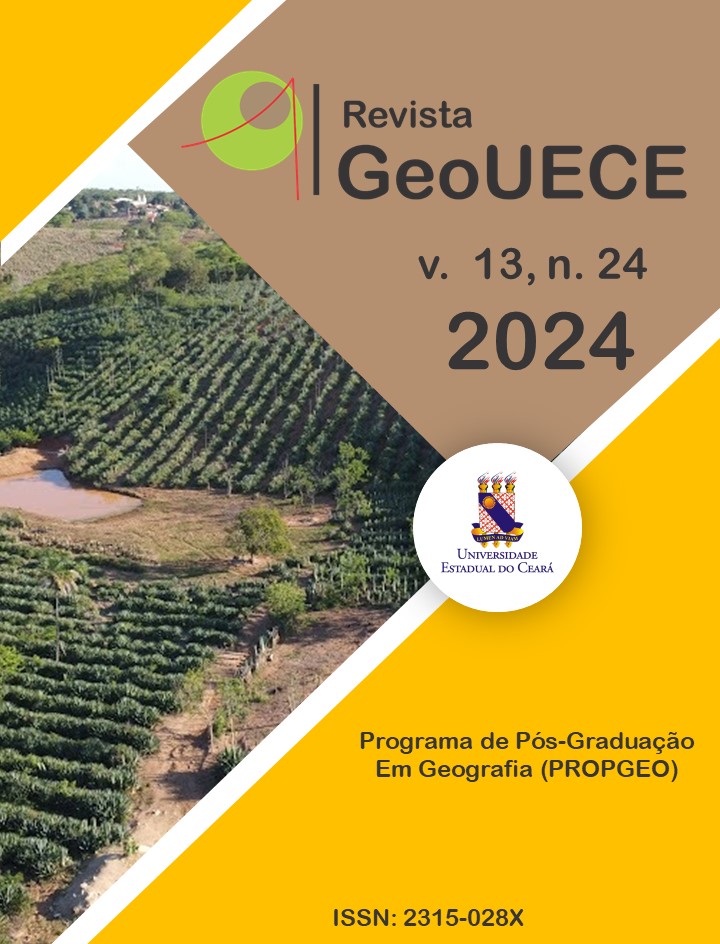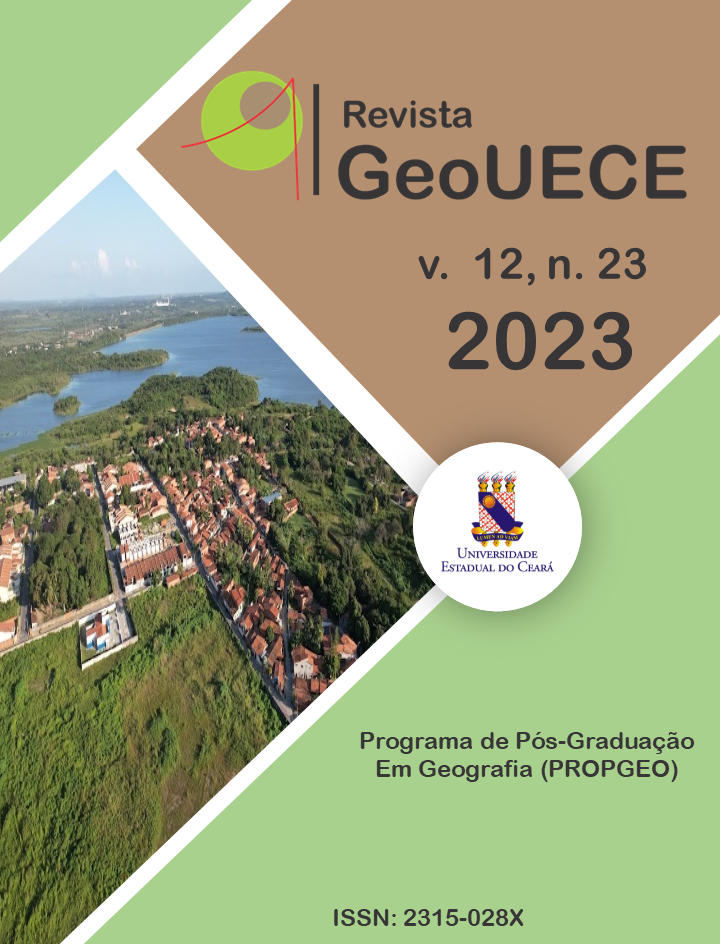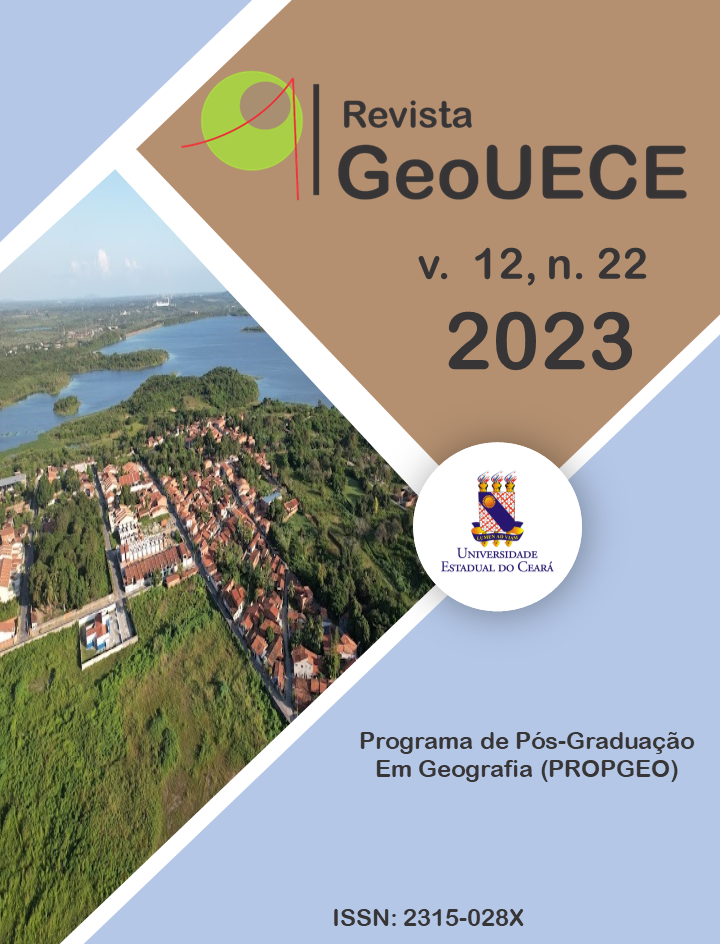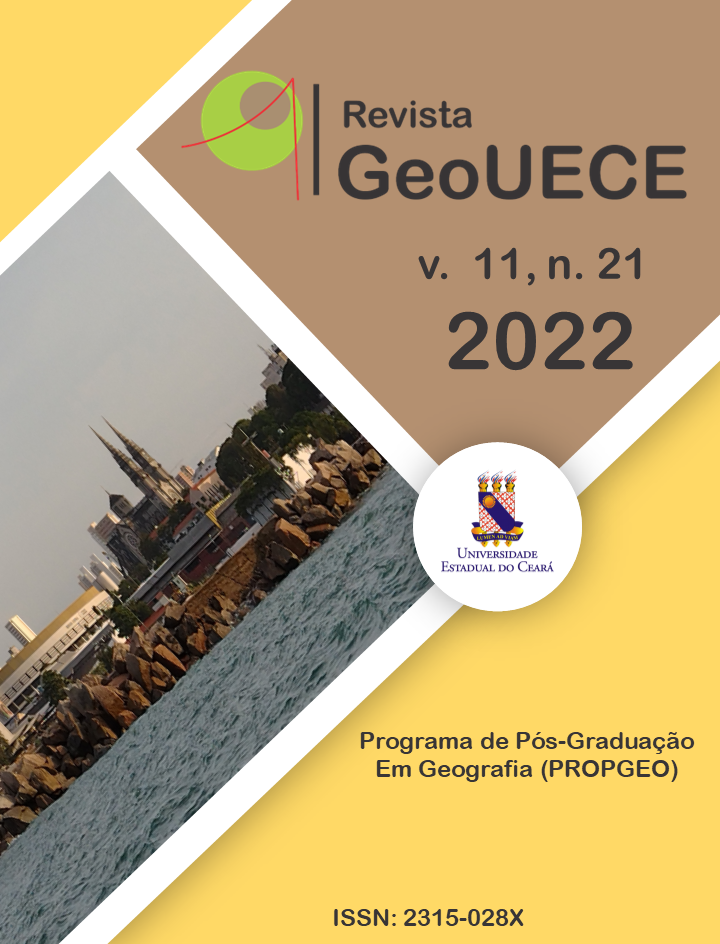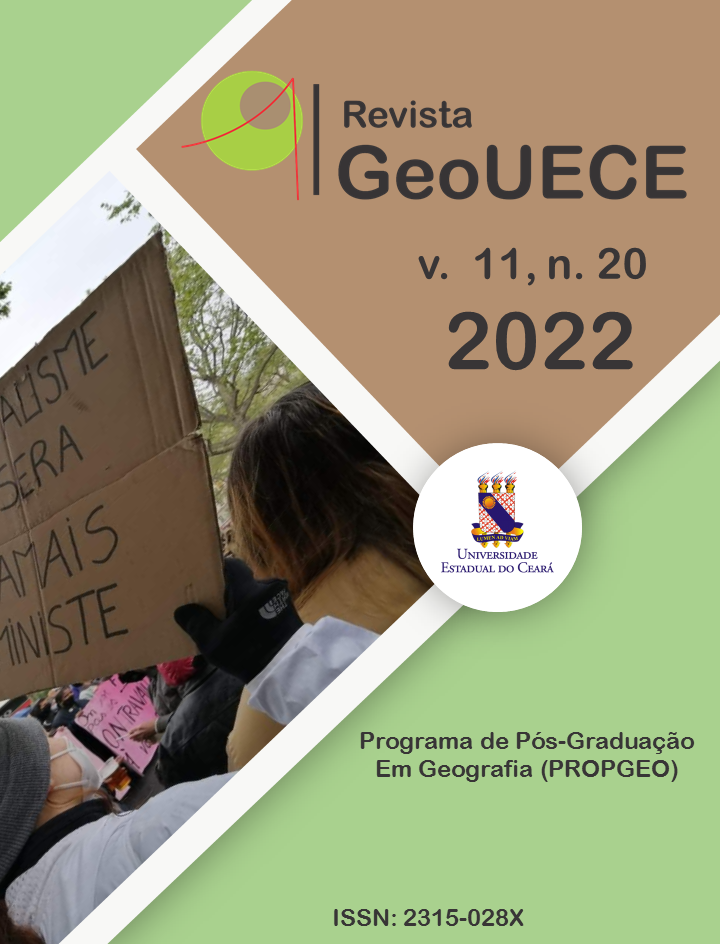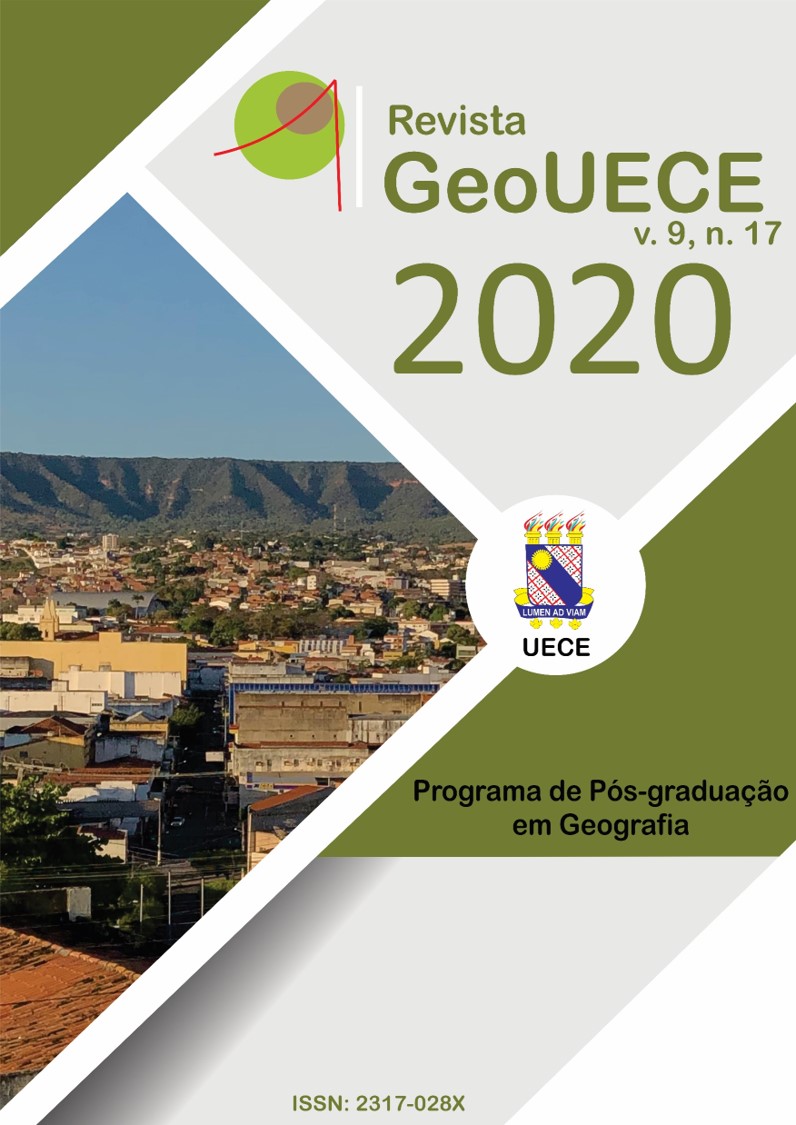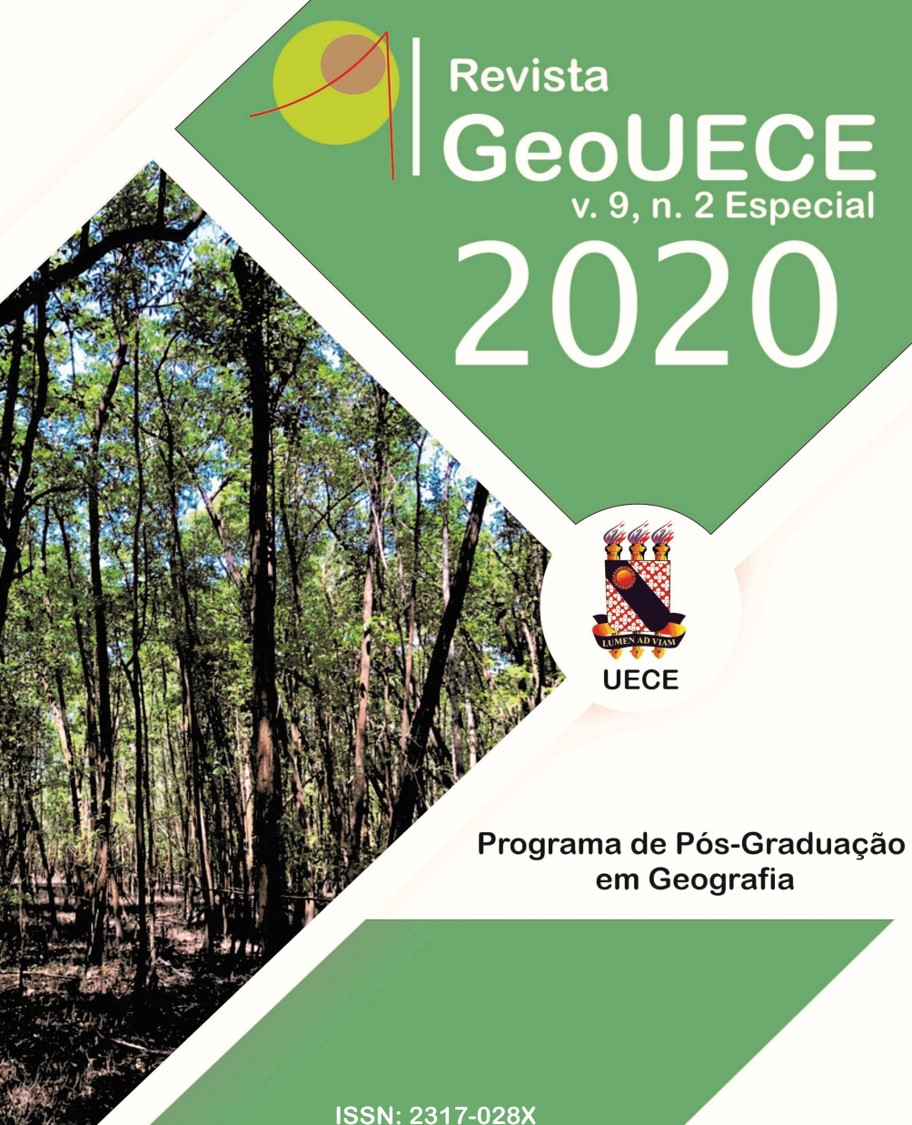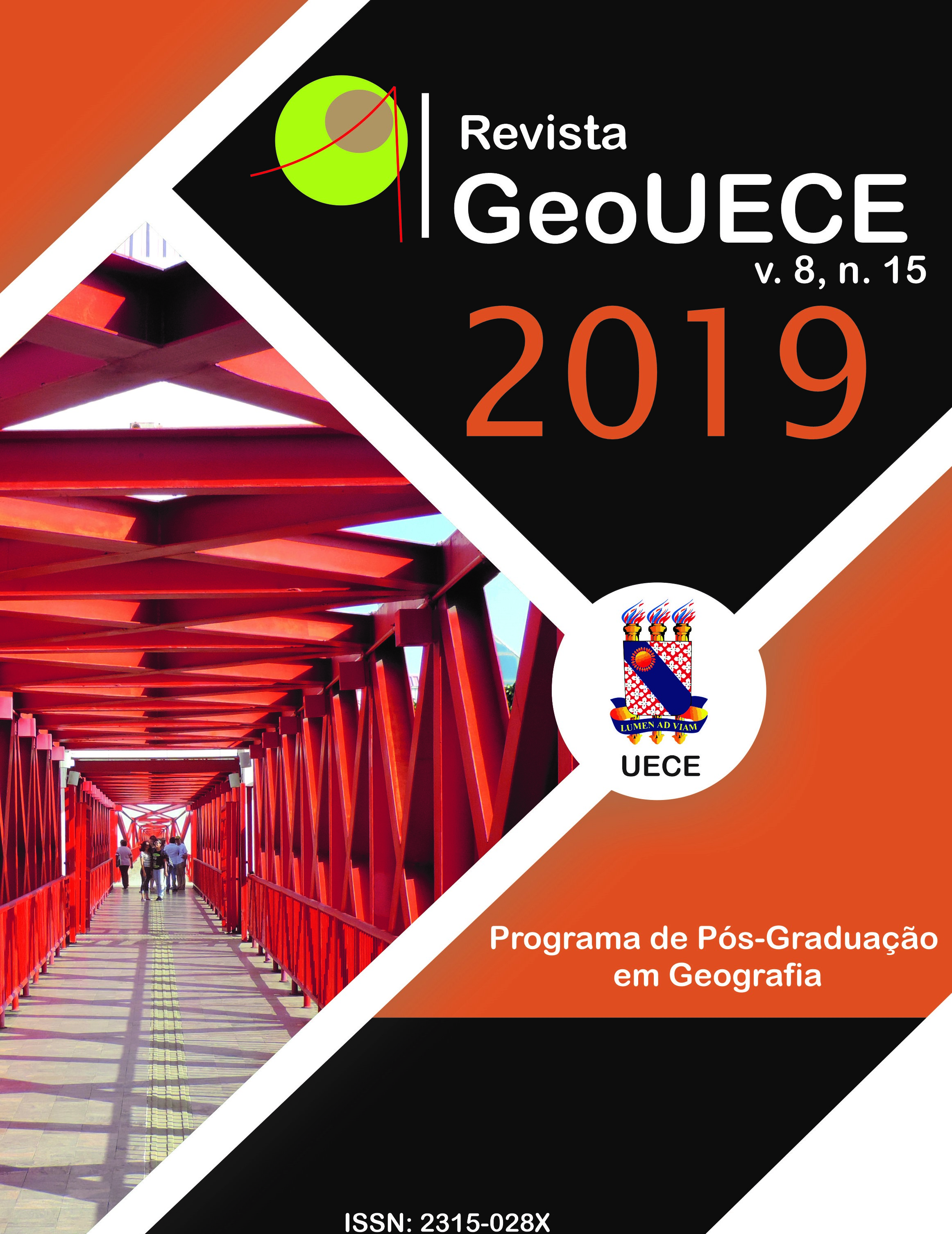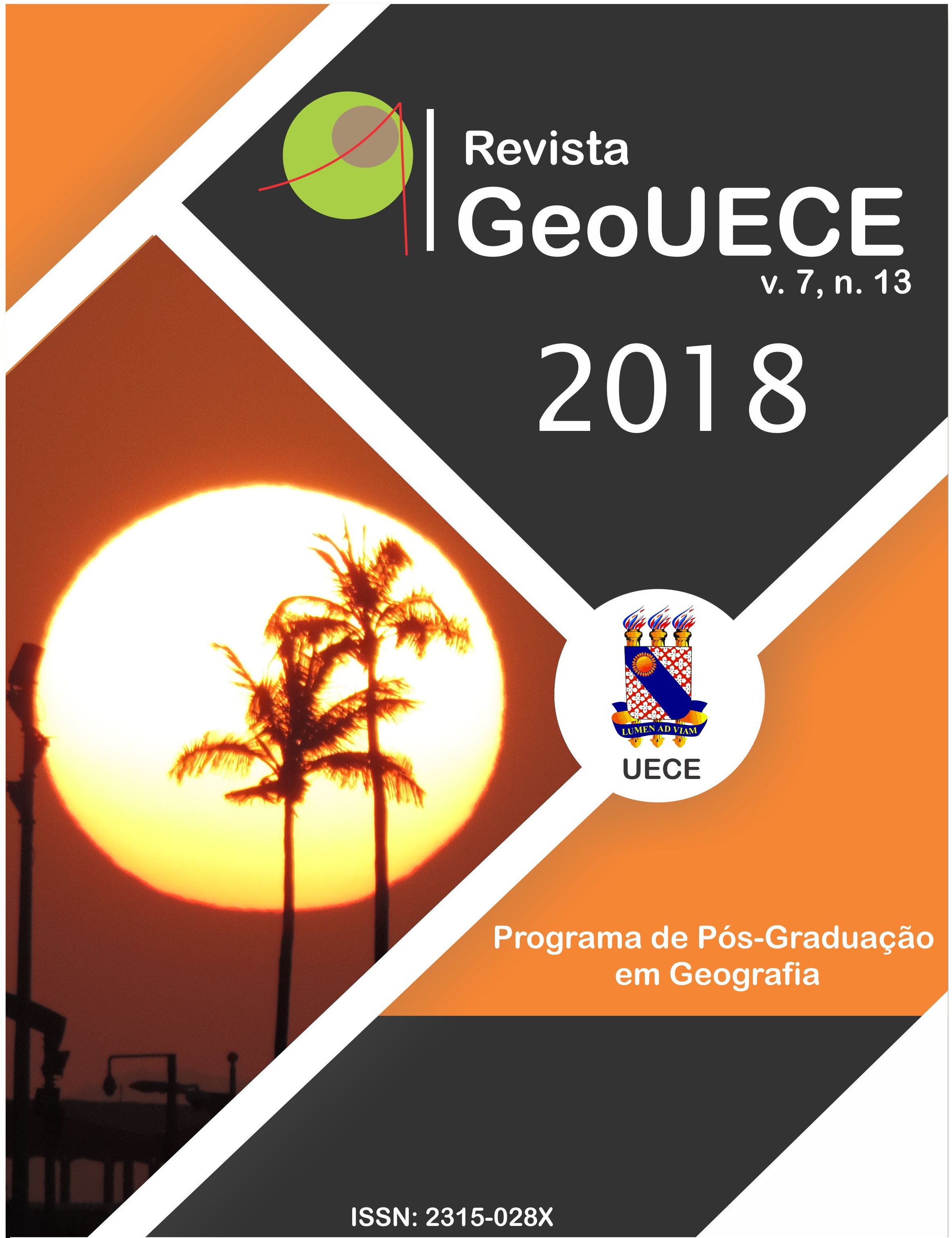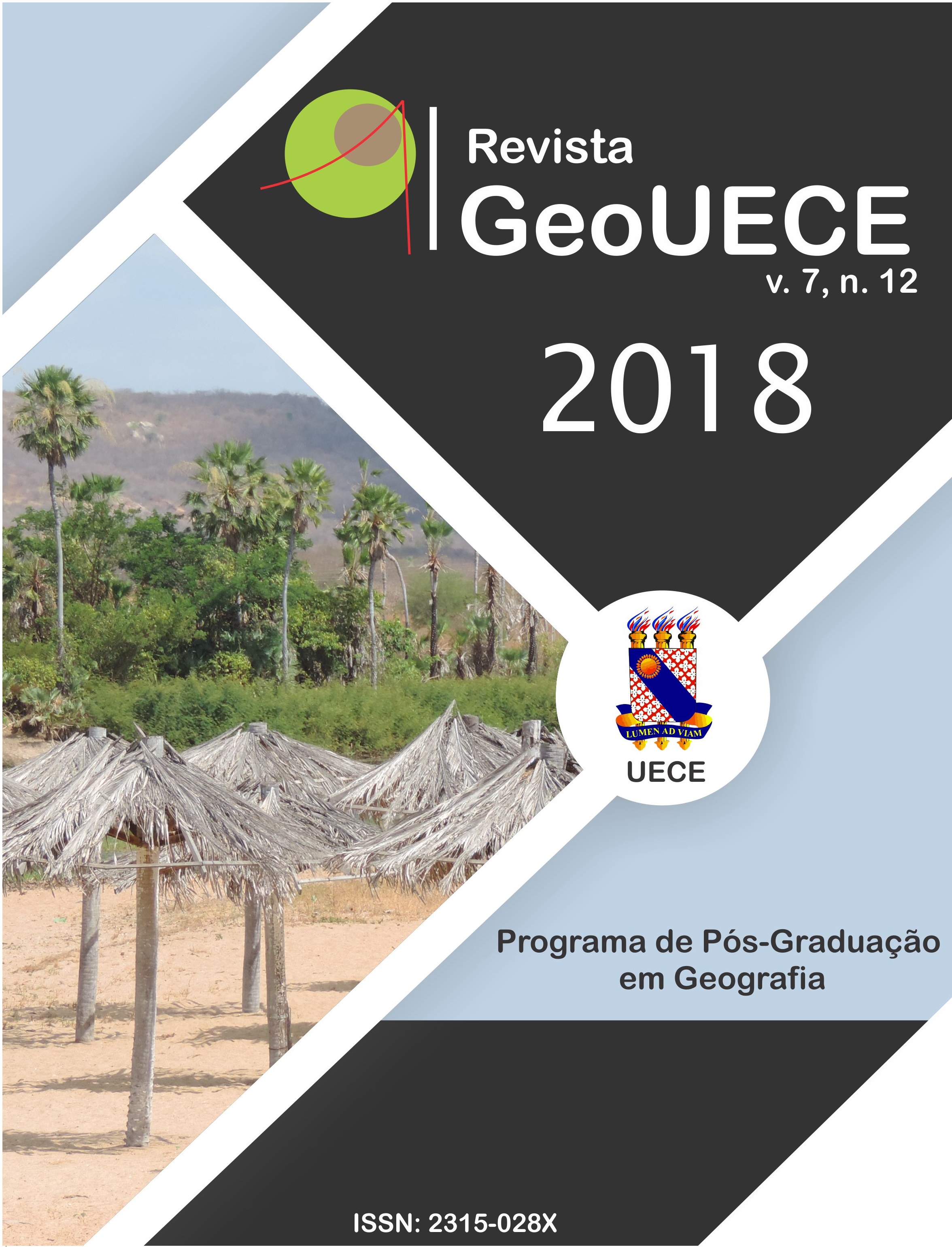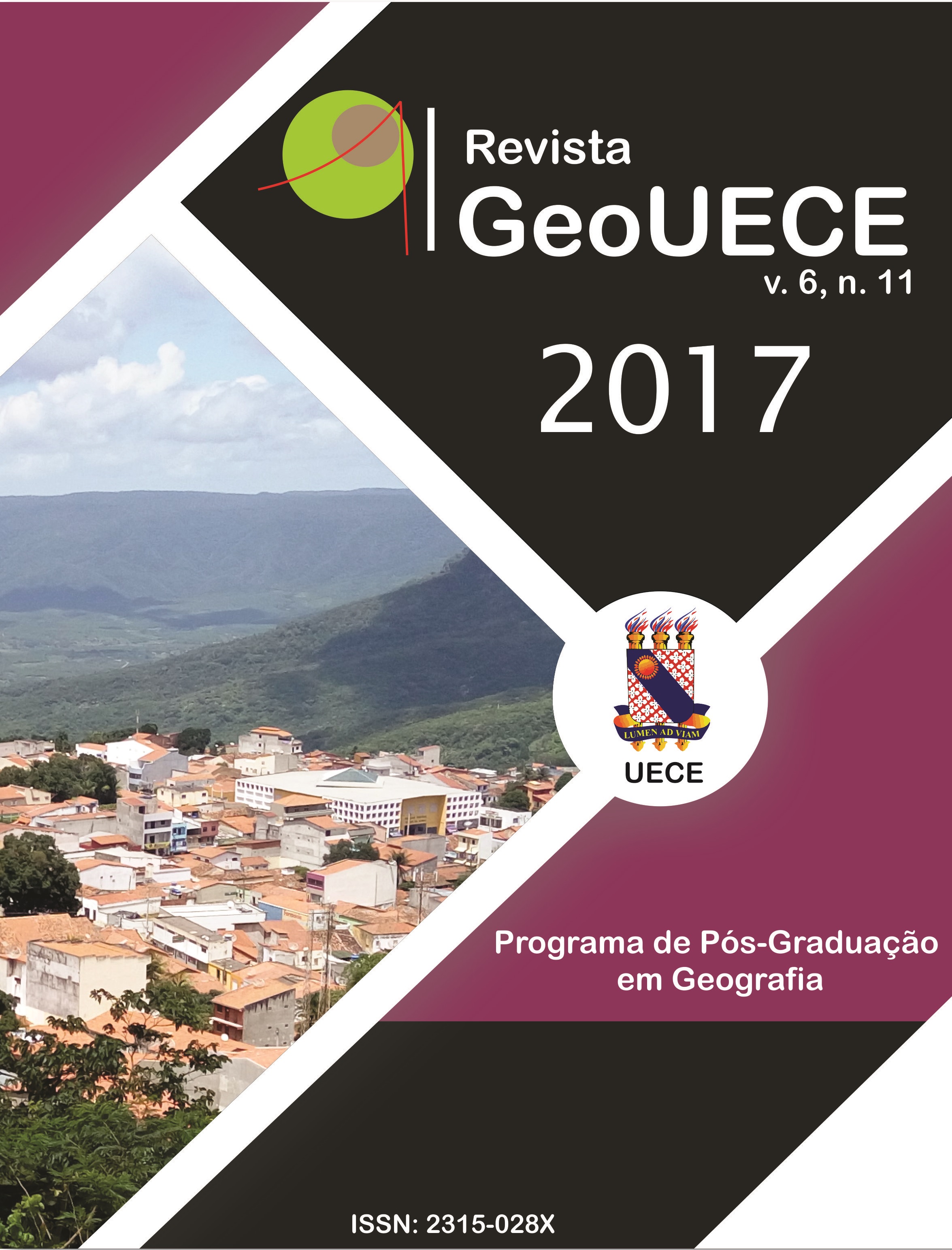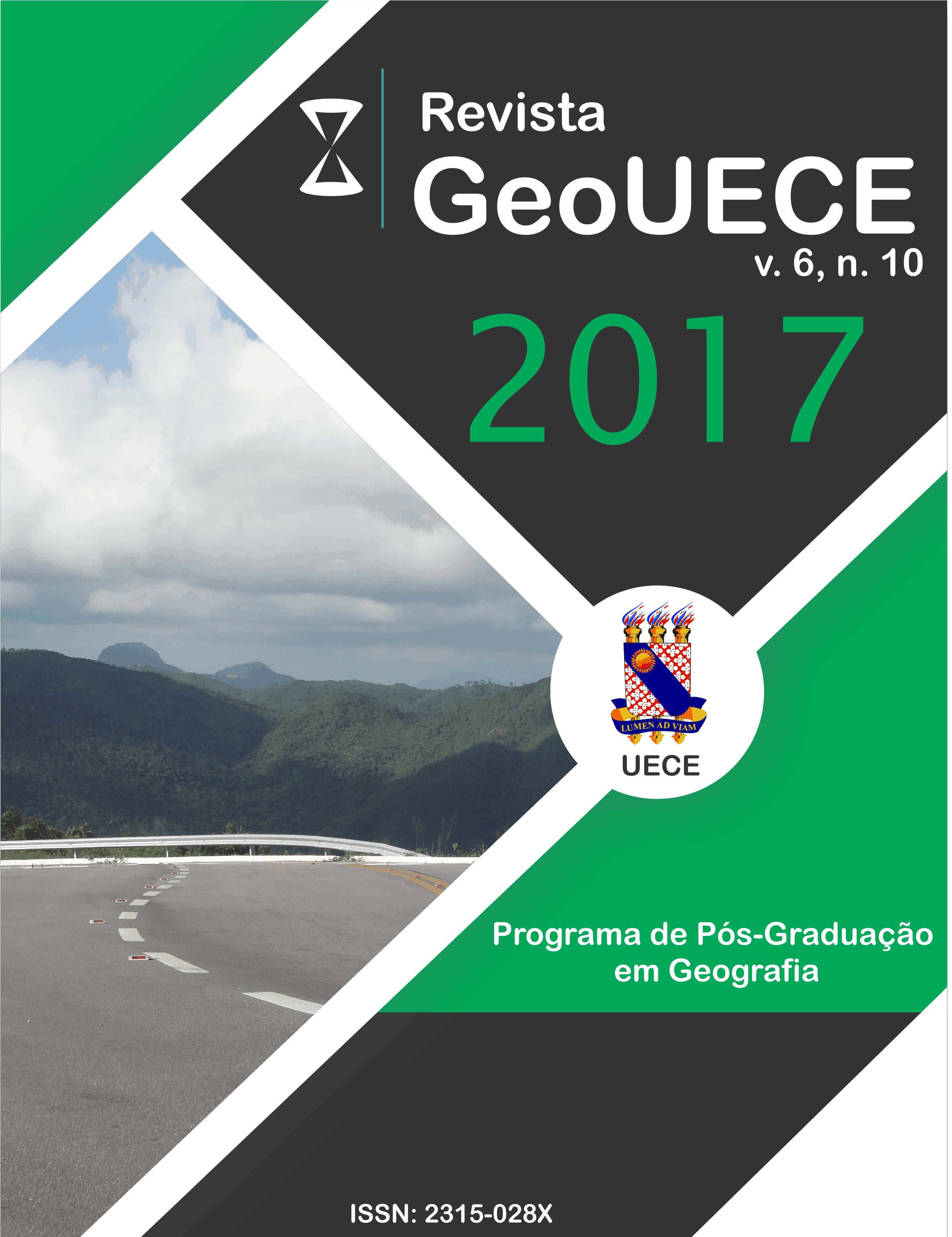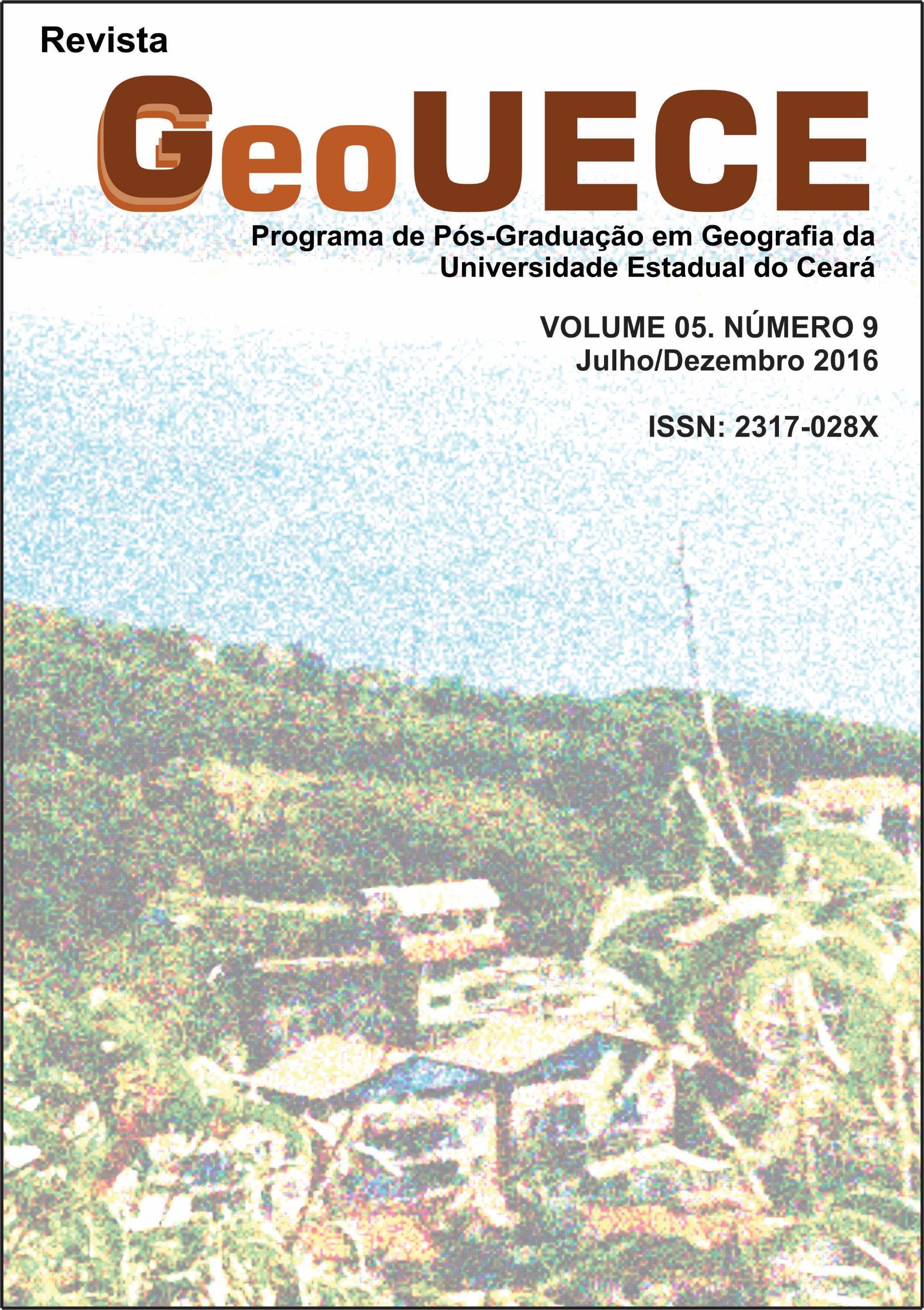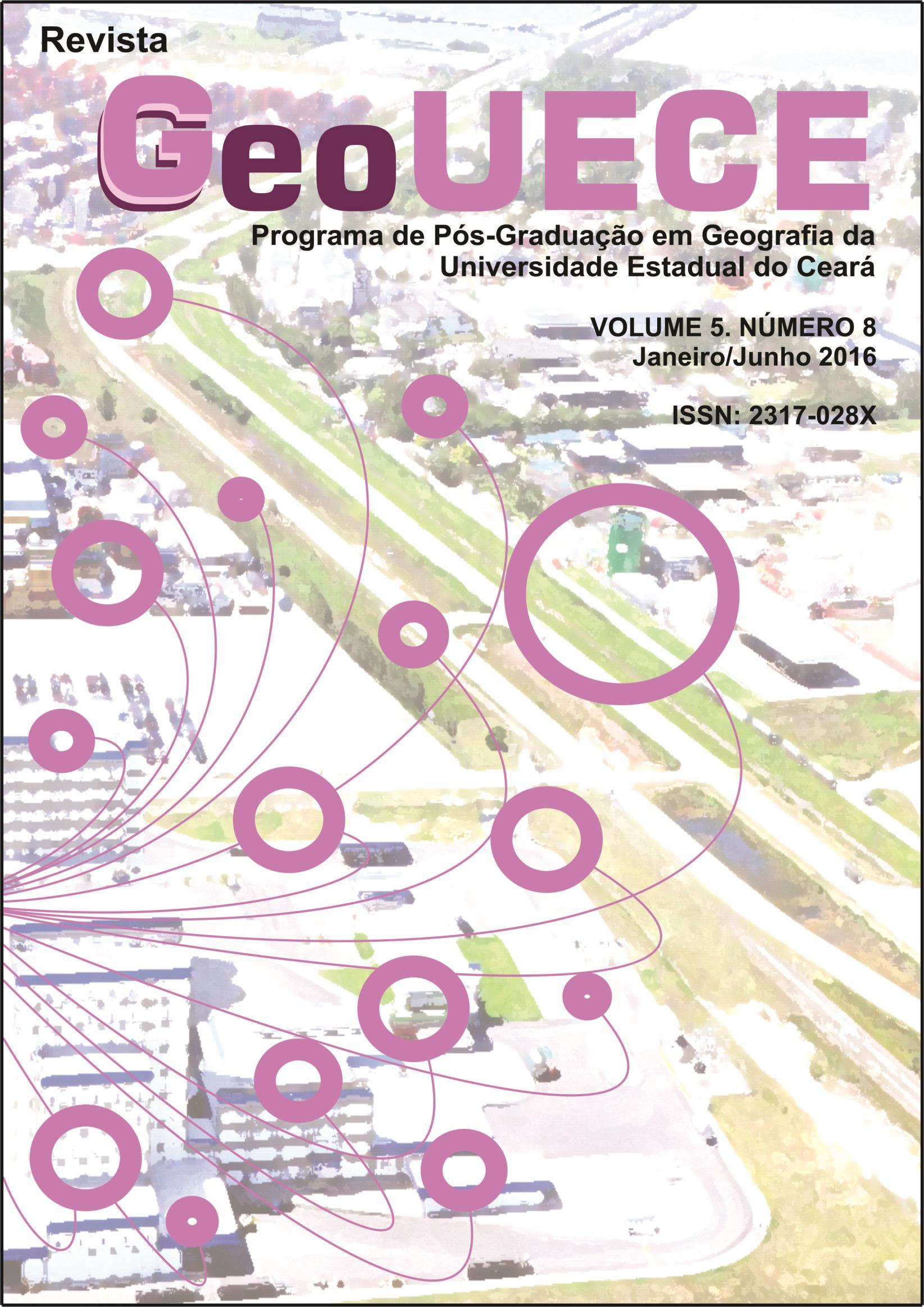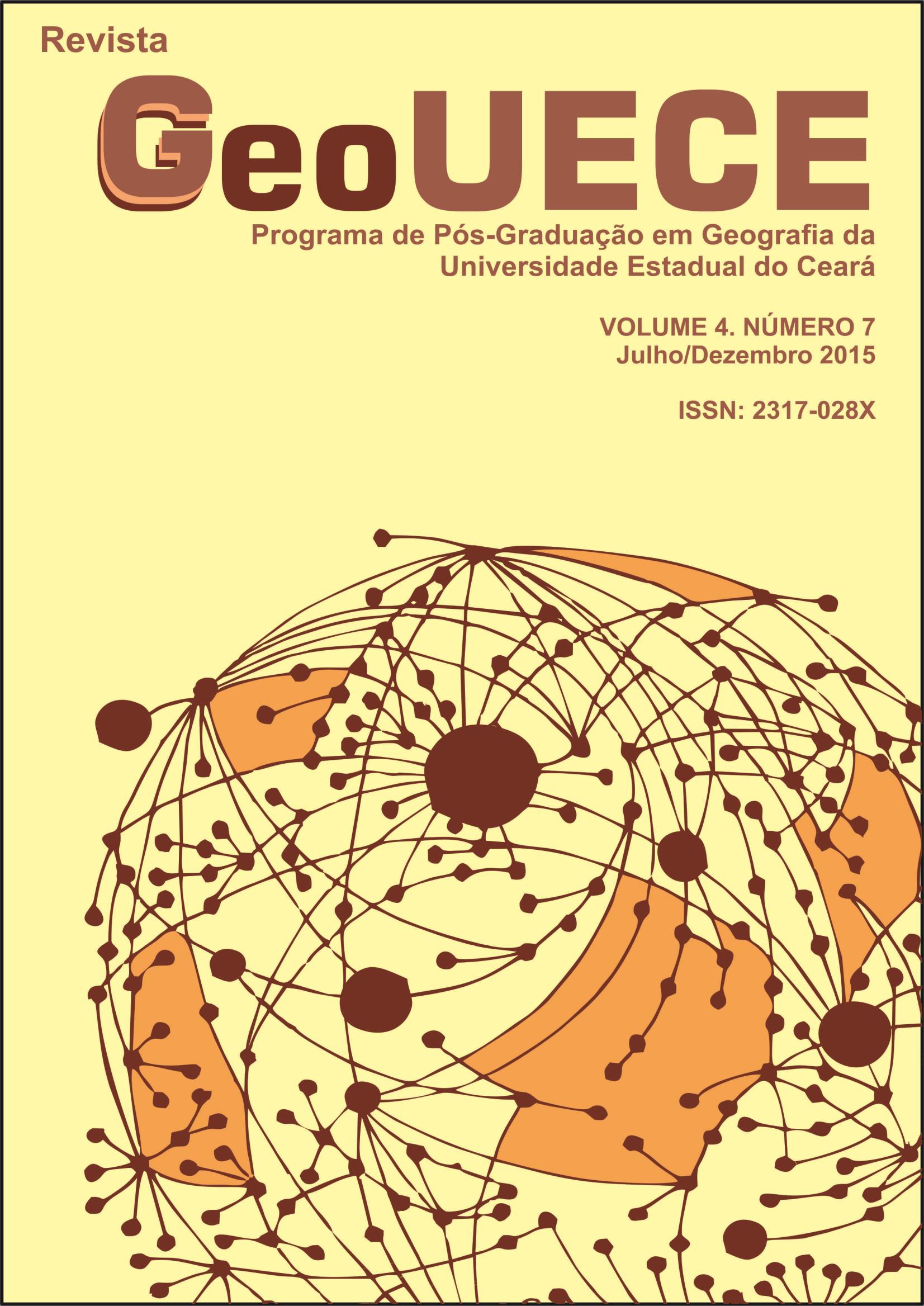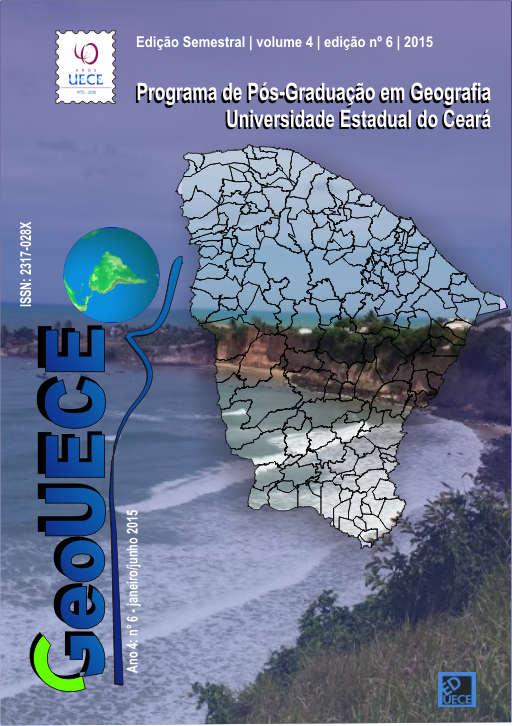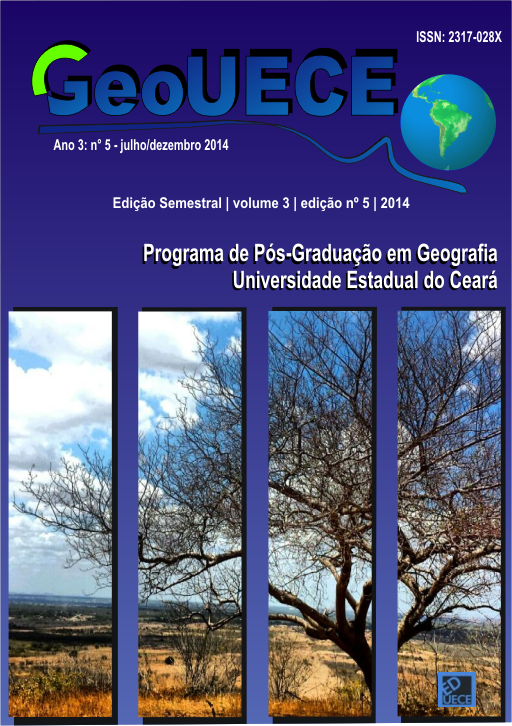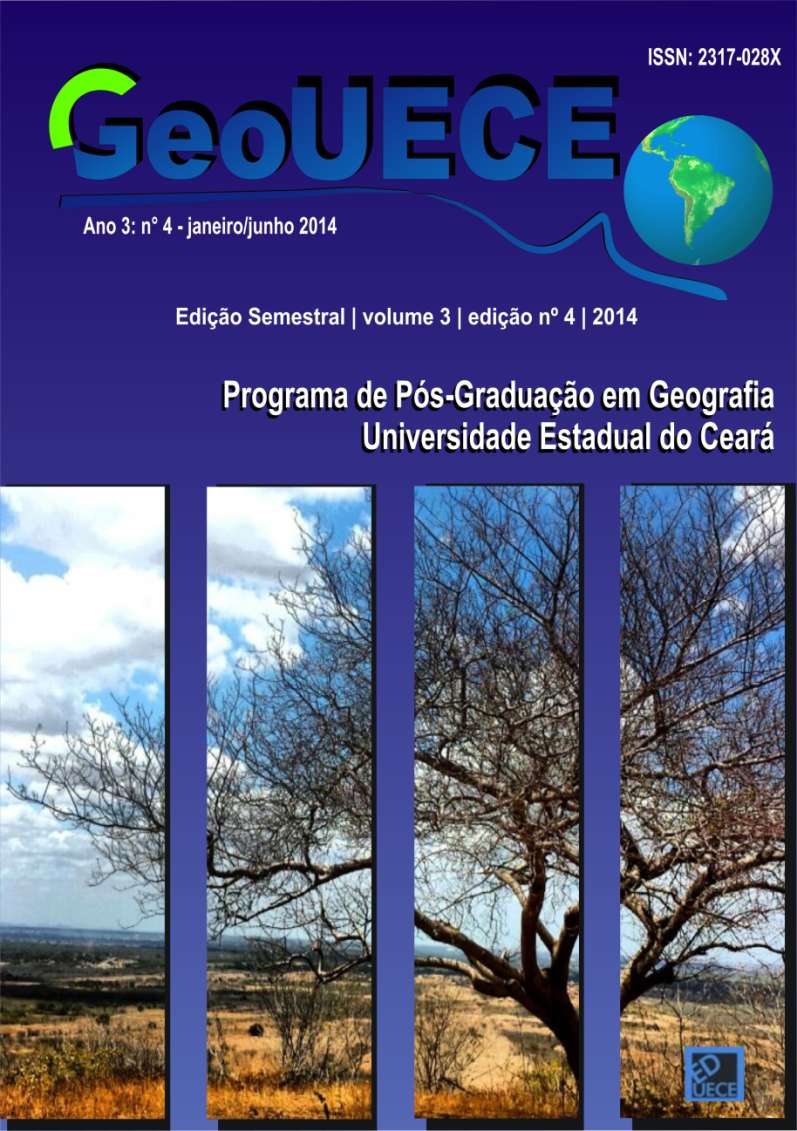Archives
-
Janeiro a Dezembro de 2025
Vol. 14 No. 26 (2025)Publicação em fluxo contínuo (em andamento).
Data de início: 16 de maio de 2025
Data do final da publicação: 31 de dezembro de 2025
-
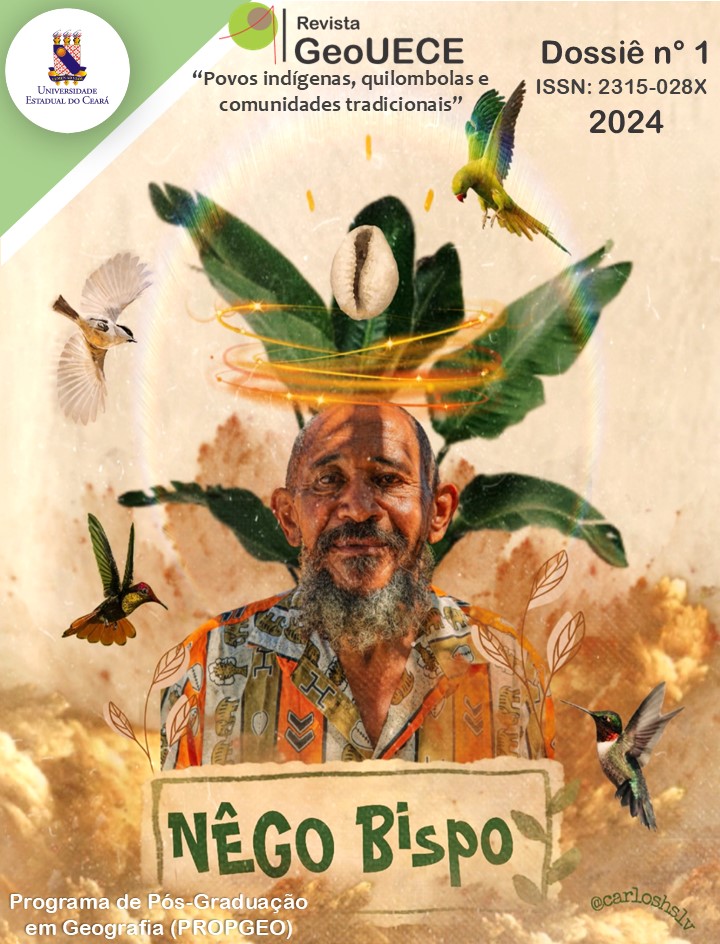
Dossiê: Povos Indígenas, Quilombolas e Comunidades Tradicionais: contracolonização, terra-território, corpos e ambientes
Vol. 13 No. 25 (2024)Nêgo Bispo
Colagem Digital
carloshslv
2023
-
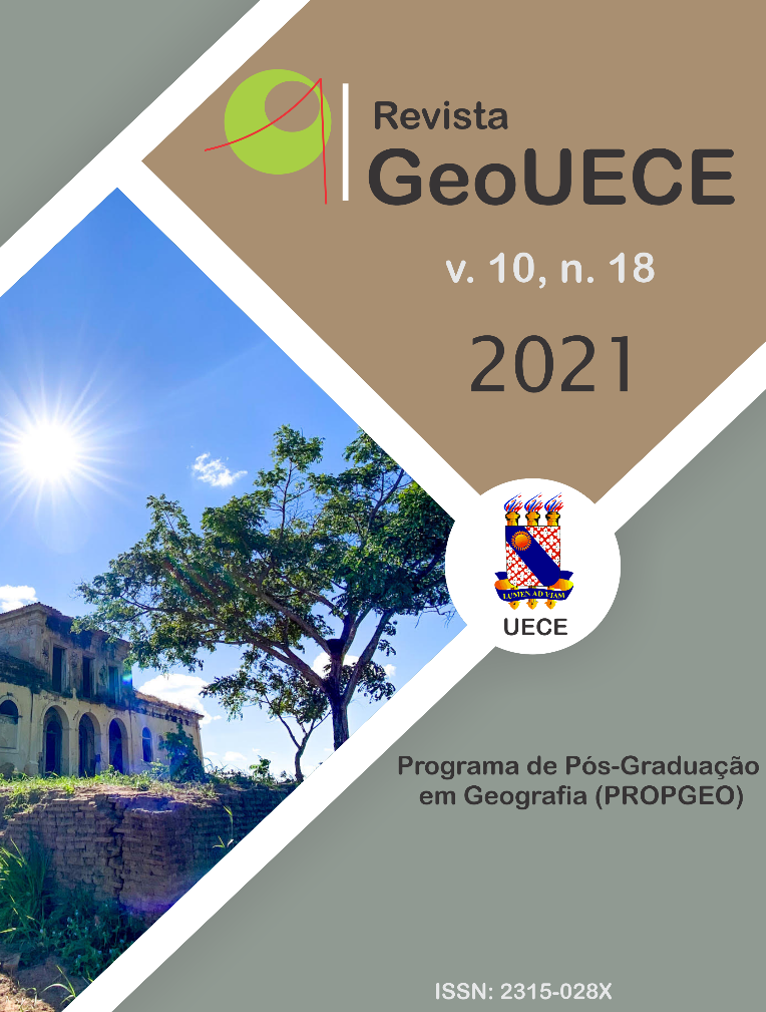
Vol. 10 No. 18 (2021)
PRESENTATION
The context of the global public health crisis caused by the covid-19 pandemic reveals that solidarity, more than capitalist competitiveness, should be the basis for solving collective problems. This means, among others, the need for greater sharing of research, as we believe that the quality of academic knowledge is possible through cooperation. The GeoUECE Journal the Pos-Graduate Program in Geography of the State University of Ceará (PROPGEO/UECE), in addition to being a means of dissemination of what is produced about geographic knowledge in Brazil and in the world, it is also an electronic space for expression of political resistance, as the published works propose ways to seek constant social and environmental improvements that are not consistent with the current political decisions made on the scale of the national territory.
In its tenth volume, number 18, edition January-June 2021, the theme that structures the journal is quite diversified, as it permeates issues related to urban space, population dynamics and perception, as well as geomorphology, climatology, environmental conservation and epistemology linked to the approach to nature in geographic science. The works also represent the role of aspects of society and nature present in different parts of Brazil, with cutouts and case studies in the Midwest (Mato Grosso do Sul), Northeast (Ceará), North (Acre), Southeast (Rio) de Janeiro) and South (Rio Grande do Sul).
In this issue, still as part of the Journal's constant changes, we inaugurate the editorial with the thought-provoking text by Professor Reuben Rose-Rewood, Professor at the Department of Geography at the University of Victoria / Canada, who acts as one of GeoUECE's advisors.
The article entitled "The spatial practices of real estate developers and the patterns of real estate production in Macaé-RJ", by Oséias Teixeira da Silva, deals with capitalist real estate production in the structuring of cities, based on the practices of real estate developers. Next, the article by Fabrini Carvalho Mendes, entitled “Infant mortality: an analysis in Rio Grande de Sul (2010-2015)”, deals with the analysis of the Infant Mortality Coefficient, used as an indicator of social diagnosis in a specific area, in which the cutout is the state of Rio Grande do Sul. The results stand out the areas that need more actions and planning in the monitoring of pregnant women, which is in the prenatal phase. The article, “Hydrosedimentological dynamic of the middle Acre river: initial research of process of the sedimentation”, by Waldemir Lima dos Santos, Rafaela Ferreira de Oliveira and Cleyton Aguiar Crisóstomo, highlights theological dynamics in the Amazon river, where they are detected possible problems arising from the siltation process of the Acre River. Already “Geomorphological aspects of the São Joaquim formation in Northeast of Ceará state, Brazil”, an article by Abner Monteiro Nunes Cordeiro, Frederico de Holanda Bastos, Marcelo Martins de Moura Fé and Daniel dos Reis Cavalcante, expose how the morphostructural aspects and the lithological heterogeneity express particular features of the relief from differential erosion. Then, the article by Leonardo Danielli and Solismar Fraga Martins, entitled “The capitalist production and (re)production of urban space: a case study on the periphery of São João district, in the city of Pato Branco, state of Parana”, analyzes the capitalist production of urban space from actions of forced removal, which materializes processes of socio-spatial segregation. In the article "The place in dispute: experiences, perceptions and identity from territorial relations in the Santana Settlement, municipality of Brasilândia - MS", by the authors Beatriz Mercês de Souza dos Santos and Wilians Ventura Ferreira Souza, discussions the process of deterritorialization of riverside communities, in which, from the concept of place, the abrupt changes in the relations between the subject and the place are evidenced. Then, the text entitled “Taim Ecological Station: an analysis of the use of natural and physical space and environmental legislation”, by Marília Silva da Costa and Simone Emiko Sato, addresses the need for Fully Protected Conservation Units, as important for the maintenance of biological diversity and the physical-natural system, given the pressure and degradation generated by land uses. The article by Éder Leandro Bayer Maier and Bruna Cavalcanti Gautério, entitled “Socioeconomic characterization of the granizing precipitation in Rio Grande /RS: a case study on the granizing precipitation in September 2015 and its effects”, presents a socioeconomic characterization of the analysis of the precipitation of precipitation solids (hail), in order to map the environmental risk caused by this phenomenon, mainly on the damage caused. Completing the set of published articles, the text “Marine geography: a holistic approach”, built together by the authors Antônio Rodrigues Ximenes Neto, Francisco Oricélio da Silva Brindeiro, Francisco José Maciel de Moura, Luciano Filho de Sousa Paula, Paulo Roberto Silva Pessoa and Jader Onofre de Morais, highlights the aspects of epistemology in physical geography, considering the marine environment as part of the geographic space, due to the strong relationship with the emerging areas, in their various aspects (economic, social, political, physical-natural).
We wish you a good reading and we take this opportunity to reinforce that the GeoUECE Journal receives in a continuous flow articles, reviews, interviews and pedagogical experiences. Finally, we would like to thank those responsible for preparing this issue, especially our peer reviewers and editorial board, who have worked tirelessly to make the results of collectively produced reflections public.
Fortaleza (CE), July 2021.
Rafael BRITO
Denise BOMTEMPO
Editorial Coordination GeoUECE Journal.
-
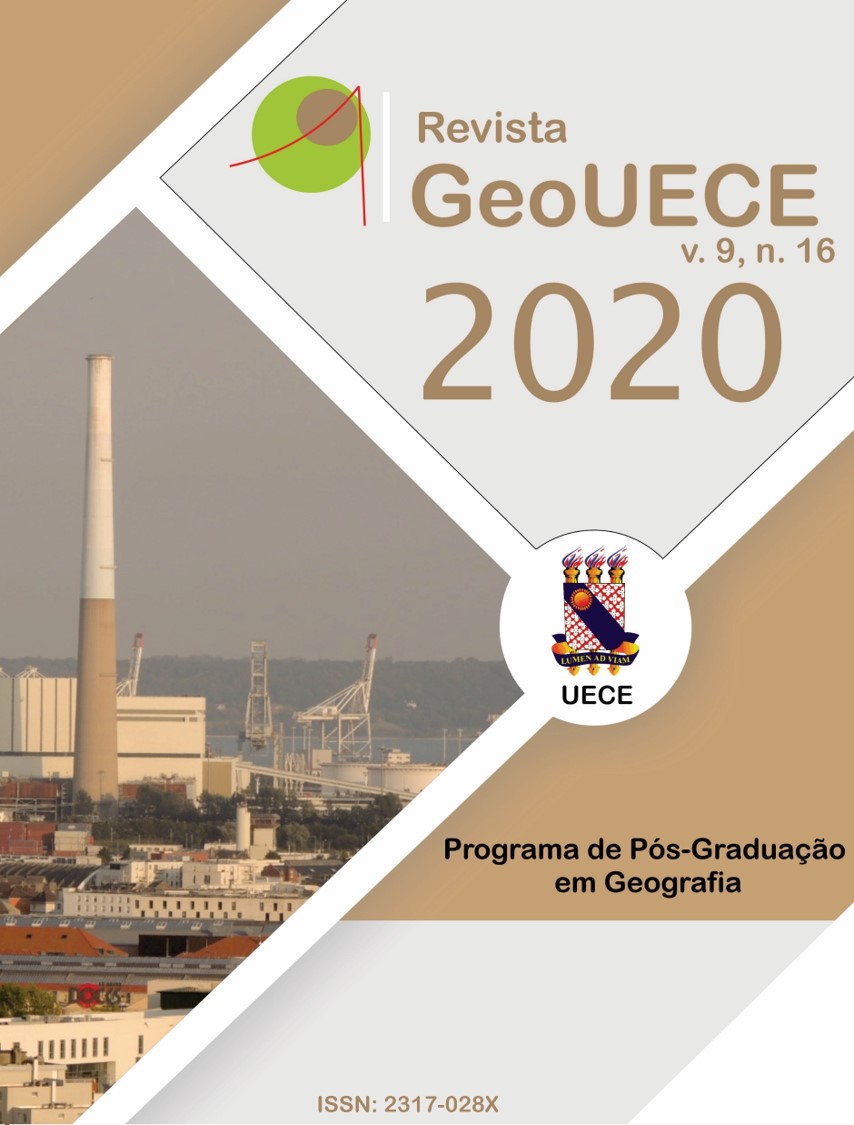
Vol. 9 No. 16 (2020)
EDITORIAL
In this moment of multiple resistances and hopes for the present - future, the GeoUECE Magazine of the Geography Posgraduate Program at the State University of Ceará (PropGeo / UECE), presents volume 9, number 16, January-June 2020 edition.
In addition to the qualified works published in this issue, we would like to make public that the magazine has undergone constant changes in its form and content. In this issue, the readers will have the opportunity to check the innovations carried out in partnership with the new members of the Editorial Council, they are: development of a new layout; revision of the rules of publication and creation of the session “pedagogical experiences”. The new session was created, as we understand that the works produced in the most varied teaching, research and extension experiences can be socialized as a possibility of learning and building a multiple science. Also as part of the changes, in addition to the formation of the Editorial Council, we also expanded our Scientific Council.
In turn, in volume 9, number 16 (Jan./Jun, 2020), we present a set of 12 articles written by highly qualified researchers and researchers, whose thematic, spatial and temporal cuts intertwine scales in order to present the methodological theoretical diversity of contemporary Geography.
The articles signed by the members of the Latin American Network of Studies on Space and Economics (RELAEE) published here, were discussed at the 3rd Annual Political Economy Meeting, organized by the Portuguese Political Economy Association (EcPol) and held in the city of Porto / Portugal, in January 2020, at the Portuguese Catholic University and at the Faculty of Economics of the University of Porto. In this context, the text of the authors Floriano Godinho de Oliveira and Leandro Dias de Oliveira, explain phenomena and processes that are configured by a myriad of agents involved in the “spatial circuit of oil production” that materialize in cities, generating, among others, fragmentation and socio-territorial inequalities. In continuity, the text by Maria Terezinha Serafim Gomes, aims to explain the role of the State in the formation of hybrid spaces for innovation in Brazilian medium-sized cities. To complete the triad of RELAEE articles, Regina Helena Tunes from a problematizing view of reality, addresses how economic geography allows to explain the industrial dynamics of Rio de Janeiro. In summary, the three texts show part of the great potential that this research network represents to read, from the perspective of political economy and economic geography, the recent dynamics of the territory. In this perspective, the works of Francisco Cortezzi “La circulation comercialle de l'açai brésilien (1999-2016): le reseau geografique international ses nœuds, ses flux et ses nouvelles forms de production et de reproduction dans l'espace” and the authors Marlon Cavalcante Santos; José Borzacchiello da Silva and Eciane Soares da Silva Bezerra entitled “Globalization and the urban space circuit of sewing: the clothing industry in Fortaleza-Ceará”
The dynamics of nature are present in a multiscale way in the works signed by Beatriz Sosa, Gabriela Fernandes and Marcel Achkar that analyze the “Relationship between the propagation of the invasive process of triacanthos gieditsia and the deposition of arena in bosques del rio Uruguay”; also by Thais Ferreira da Conceição; Miguel da Guia Albuquerque; Jean Marcel de Almeida Espinoza, we present the text that is concerned with investigating the “Use of the polygon method of change to characterize the behavior of the coast line of the peninsula of the municipality of Rio Grande / RS, between the years 2004 to 2018”; next, the debate about environmental changes with emphasis on the aspects of land use and occupation in Tocantins appears in the article written by Sandro Sidnei Vargas de Cristo and José Paulo da Silva Noleto. Then, the conflict that is also inherent to the appropriation of nature appears in the text signed by Cícero Bezerra da Silva, which is thus entitled “Conflicts over water and the (mis) paths of use and appropriation in the context of the semiarid”. Last but not least, the contributions of the works on the dynamics of nature are based on the concerns linked to the planning of areas with vegetation cover, as is the case of the work signed by Giovane de Oliveira Bonilha and Simone Emiko Sato, entitled “Analysis the temporal dynamics of land use and coverage as a subsidy to the planning of the municipality of Rio Grande-RS and the article “Pedogeomorphological characterization of an Arenosol-podzol transition in the Sapiranga Ecological Reserve, Mata de São João-BA.
The work entitled “The importance of field classes in the teaching and learning process of Geography, signed by Anderson Felipe Leite dos Santos and Maria Marta dos Santos Buriti, inaugurate the GeoUECE session entitled “Pedagogical Experiences”.
We thank the entire team of our magazine, the reviewers, authors and authors, while welcoming the new members of the editorial and scientific councils. Thank you for believing in collective construction!
Happy reading to the entire academic community!
Denise Cristina Bomtempo
Davis Pereira de Paula
Editorial Coordination of GeoUECE MAGAZINE
August 2020.

